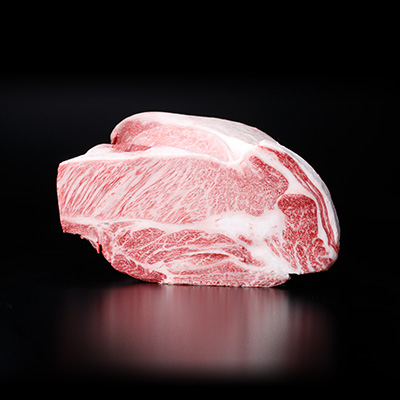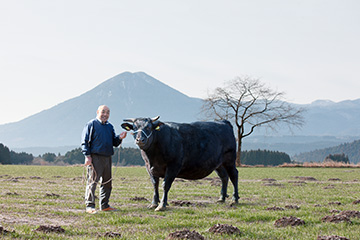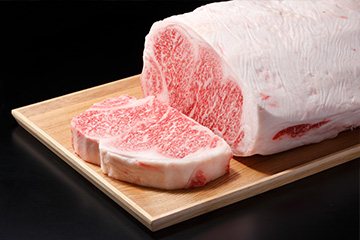日本産和牛
JAPANESE 100% AUTHENTIC WAGYU BEEF

What is REAL Wagyu?
Universal Wagyu Mark

In order to introduce the unrivalled quality of Wagyu to people throughout the world, the “Universal Wagyu Mark” was established in 2007 with our sincere hope to provide the best experience of authentic Wagyu. The mark is the proof of authenticity.
Authorised Wagyu is only 4 breeds of cattle and bred between them
- Japanese Black
- Japanese Brown
- Japanese Shorthorn
- Japanese Polled
If crossed with another breeds of cattle, it’s called F-1 beef, not Wagyu.
Wagyu is a work of art, blessed by Japan's rich nature. Enjoy the real Wagyu with pure pedigree.
Wagyu in Japan, raised one by one like a part of the family

From their birth to shipment, Wagyu are given individual names and nurtured like a part of the family. The finest taste of Wagyu comes from the tender, loving care that goes throughout their life.
The taste of WAGYU

- Taste: Wagyu beef has a distinctive taste, the aroma will surely wrap up your whole mouth, and end with a gentle finish.
- Softness / Texture: Japanese Wagyu has various delicate beef quality: unique softness and texture. Cutting of Japanese Wagyu is made easier due to its smoothness and texture.
- Rich and prosperous taste, unlike the other beef: Japanese Wagyu has low melting point, it will melt as soon as you put it in your mouth. It is different from other beef because of difference in texture, Wagyu can be varied and have a refreshing taste. (Marbling (fats) in Wagyu is said to be very greasy, but it’s not as what it seems to be.)
- Fragrance: The ‘fragrance’ of Japanese Wagyu can be peculiar compared to other beef. The fragrance of fats, the taste of meat, and aroma are all different to each part!
- Each parts of Wagyu beef can be special and different to someone, enjoy all parts of Wagyu for its taste, aroma and texture!
Characteristic of Wagyu

- Difference in breeding method: Wagyu in both Australia and US is said to have long grazing period. Grazing method can end up making the beef to become muscular; thus, affect and changing the meat texture. Japanese Wagyu beef has different meat quality because of the feeding method, and extensive care by their owners.
- Although this formulation is varied among Japanese beef cattle, it’s been known that feeding in Australia and US centered on pasture, while grain-feed is the characteristic and specialty of Wagyu beef.
- Most Japanese Wagyu went through grain-feed. Grain-feed makes the meat firm and softer compared to grass-feed method.
- Difference in melting point: Wagyu beef is said to have low melting point. Approximately 20 degrees, the fat starts to melt (F1 beef is around 30 degrees). Low melting point of Wagyu fats contains unsaturated fatty acid: it is said to have healthy ingredient such as oleic acid, stearic acid, Omega 3 etc.
- (It contains component that prevents arteriosclerosis, allow smoothness in blood circulation, enhance your skin quality and beauty.) (Besides, it’s stated that Japanese Wagyu helps in reducing bad cholesterol, increase good bacteria in intestines, also reduce the risk of atopic dermatitis, etc.)
- Breeding period: Japanese cattle are kept for 28 months or more. Thus, it creates all the benefits that are stated above.

